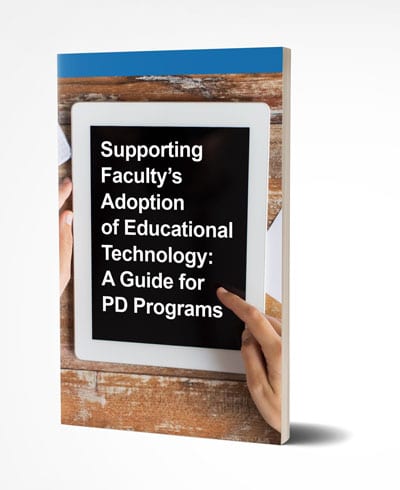The adoption of new technology in today’s classroom is inevitable. However, there are barriers that must be removed in order to make this adoption successful.
According to David Nagel, these barriers include:
- Outdated Skills Among Faculty
New technology demands new skills. Faculty may begin their careers with the latest skills in technology, but it will not be long before these skills must be updated. The best way to equip faculty with updated skills is through quality professional development.
- Digital Inequity Among Students
Students must have access to the new technology if the adoption is to be successful. Although it seems like everyone is online, there are 30 million people in the United States who do not have high-speed internet. Universities must ensure that all students are able to access digital learning.
- Lack of Digital Literacy Among Students
Although most students are skilled in isolated technologies, many students lack digital literacy. They do not have a deep understanding of the digital environment, and they lack intuition when experiencing new technology. Thus, they are not able to contribute new content when given the opportunity in a new environment. The university must ensure all students are digitally literate so new technology can be a tool for learning, rather than a barrier to learning.
- Underdeveloped Digital Citizenship Among Students
Students must be able to use technology appropriately; they must be good digital citizens. They need to understand online etiquette, as well as their digital rights and responsibilities. Without these skills, collaboration and communication in digital learning environments will be thwarted. Thus, universities must provide means for developing digital citizenship before students enter the digital classroom.
So, What is to be Done?
The university must remove potential barriers to new technology with high-quality professional development (PD):
- Create a Community of Learning
Identify faculty members who are quick to learn new technology, and encourage them to mentor their colleagues. Provide online opportunities for collaboration, as well as face-to-face workshops.
- Provide On-Demand PD
Provide easy-to-find online training so faculty can be supported at the time and place they need it. Make sure this training is accessible on multiple devices. Be sure to chunk it so the time it takes to learn a new skill is minimal.
- Develop a Reputation for Excellence
With adequate support, new technology will be the new normal for both faculty and students alike.
Faculty will be more likely to engage in PD if it meets their needs and is a reliable source for relevant information. Ask for feedback on all PD given. Use this feedback in the design of future PD.
Download our FREE eBook: Supporting Faculty’s Adoption of Educational Technology: A Guide for PD Program





